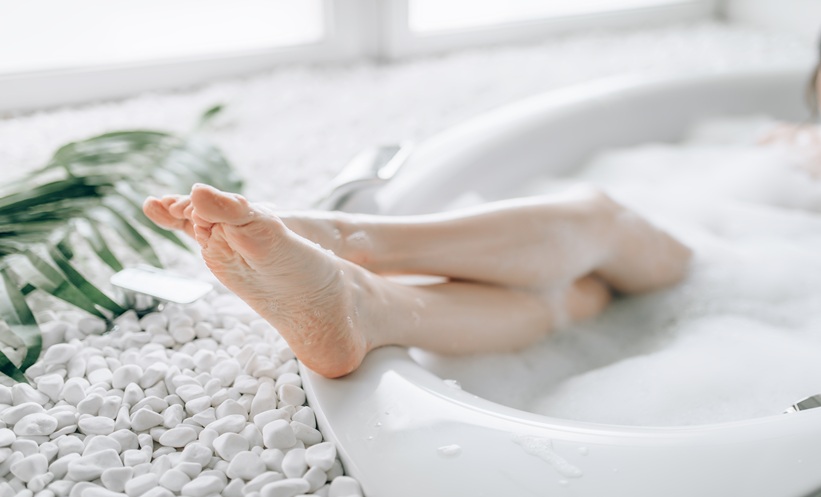Darcy Richards | Editorial Assistant
Citation: EMJ Dermatol. 2022;10[1]:20-24. DOI/10.33590/emjdermatol/10184052. https://doi.org.10.33590/emjdermatol/10184052.
![]()
HOW IS ONYCHOMYCOSIS DIAGNOSED AND WHY DOES IT MATTER?
Onychomycosis commonly occurs in adulthood but can occur at any stage in life; however, incidence is rare in children. Fungal infection can affect nails of both fingers and toes, with toenail infection being more common. Onychomycosis can cause patient distress not only due to aesthetic dissatisfaction but also as a result of secondary complications, such as onychodystrophy and paronychia. Furthermore, the high rates of relapse and reinfection following treatment have a negative impact on both the patient and the health service.
Diagnosis is made through a combination of history, examination, onychoscopy, microscopy, fungal culture, and histology. There are several management options for the treatment of onychomycosis depending on the severity, as determined by the percentage of nail affected. The ENS conducted an online survey amongst its members,1 most of whom were European dermatologists specialising in nail disorders, with an average of 20 years clinical experience, in order to provide an updated consensus on the diagnosis and management of DLSO for non-specialists.
EXPERT ADVICE ON DIAGNOSIS OF ONYCHOMYCOSIS
Gregoriou started by highlighting the results of this survey, which gave insight into how nail disease specialists manage patients in their clinics. The survey revealed that approximately 11% of patients presenting with nail disease in clinic had onychomycosis, of which 77% were diagnosed with DLSO.1 According to the findings, the elements specialists implemented to make a diagnosis in the vast majority of consultations were asking the relevant medical history, often or always performing onychoscopy, often or always performing microscopic examination with potassium hydroxide and fungal culture, and often or always performing dermoscopy, with follow-up occurring in 100% of consultations.1
In terms of DLSO diagnostic recommendations for non-specialists, Gregoriou explained that history taking should consider predisposing factors such as current tinea pedis infection, immunosuppression, and diabetes, and that clinical examination should assess for subungual hyperkeratosis and yellow/orange nail discolouration, in addition to other diagnostic steps such as onychoscopy, microscopy and culture, and dermoscopy.
UPDATES ON TREATMENT
Treatment options for onychomycosis include both topical and oral antifungals, as well as procedures such as laser therapy, nail debridement, or avulsion in more severe cases. Based on the ENS survey findings, it is recommended that response to treatment should be evaluated at follow-up every 3 months and consensus regarding decision to stop treatment should be based on mycological cure, clinical cure, or both (complete cure).1
Topical Treatment Updates
Of all the onychomycosis consultations reviewed by the ENS survey, 47% resulted in prescription of a topical antifungal,1 which was considered the first-line therapy of choice when <50% of the nail was affected.
Gregoriou discussed how topical treatment advances for onychomycosis has been a “disappointing subject,” having seen “many new agents used” in the USA that have not been available in Europe. Gregoriou went on to discuss the results of a multicentre Phase III randomised controlled trial evaluating the efficacy of a 48-week course of terbinafine 10% solution in patients with mild-to-moderate, dermatophyte-positive DLSO, affecting 20–60% of at least one great toenail, in achieving mycological and complete cure.2 Upon completion of the 48-week course and 4-week follow-up, 4.5% achieved complete cure compared with 0% in the control group. Furthermore, 69.9% achieved mycological cure compared with 27.7% in the control group The cohort randomised to the terbinafine solution experienced negative fungal culture in 95.5% compared with 58.0% in the control group. By Week 52, ≤10% of the target toenail was affected in 19.1% of the terbinafine solution group compared with 8.4% in the control group.2 No additional adverse events were observed with the terbinafine solution, demonstrating that terbinafine can reach sufficient concentrations in both the nail bed and plate to impose fungicidal activity.2 Gregoriou commented how he hopes this treatment “will eventually be launched in Europe.”
Oral Treatment Updates
The ENS survey detailed how oral antifungals were prescribed in 40% of onychomycosis consultations and that oral therapy was considered to be the first-line treatment used when either >50% of the nail was affected or infection involved the nail matrix.1
Combination Treatment Updates
The survey results indicated that combination therapy with both topical and oral antifungals or an oral antifungal alone was used in 70% of cases in which >50% of the nail was affected or the nail matrix was involved.1
Gregoriou also presented the results of a systematic review evaluating combination therapies of oral and topical medications or medications and procedures versus monotherapy,3 which revealed that use of combination therapy led to a “significant clinical benefit” in 60% of cases. The review revealed that mycological cure rates were significantly higher when oral terbinafine and topical amorolfine were used in conjunction compared with oral terbinafine alone, whereas the combination of oral griseofulvin and topical tioconazole showed significantly higher complete cure rates, mycological cure rates, and lower relapse rates compared with griseofulvin oral monotherapy.3 However, other combination studies evaluated, including oral itraconazole and topical amorolfine, revealed contradictory results.3 Combining medication with a procedure such as debridement or laser therapy also led to a significant clinical benefit in 93.3% of studies when compared with medical monotherapy alone.3 Given the limited number of studies in the review, and the conflicting results in the medical combination therapies, combination therapy should be considered as second-line therapy in cases where initial monotherapy has failed, the review concluded.3
ASSESSING RESPONSE TO TREATMENT
Assessing response to treatment can be measured in three different ways: mycological cure, defined as negative potassium hydroxide microscopy and culture; clinical cure, defined as an aesthetically ‘normal-appearing’ nail; and complete cure, defined as both mycological and clinical cure. When reviewing how the experts assess response to treatment, the ENS found that 54% of specialists used complete cure as a measure of response and 34% used clinical cure alone.1 In addition to this, expert practice regarding decision to stop treatment demonstrated no definitive consensus, with 29% basing their decision on clinical cure alone, 29% on complete cure, and 22% on mycological cure alone.1
Based on the above results, recommendations to non-experts in recognising treatment efficacy highlighted that there should be growth of a normal nail plate, normal nail colour, a reduction or absence of scales beneath the nails, and an absence of onycholysis.1
UPDATES ON PROPHYLAXIS
Gregoriou discussed how treating DLSO is “complicated by high rates of reinfection” and emergence of terbinafine resistant Trichophyton species. When discussing the most important prophylactic measures, Gregoriou stressed the importance of disinfecting contaminated socks, highlighted by evidence from a Danish study showing that soaking socks for 24 hours in quaternary ammonium led to a 100% disinfection rate.4 The study also assessed other disinfection methods such as freezing at -20 oC, which offered a 0% disinfection rate, and domestic washing at 40 oC with detergent, which only resulted in a 7.7% disinfection rate.4 This method of prophylaxis is easy to implement by patients and could prove to be a highly effective preventative method; however, hyphae in skin and nail clippings may be more challenging to eliminate than those in clothing fibres.
Gregoriou also touched on how washing at 40 oC mimics the environment inside footwear. Therefore, it is recommended that patients should launder their socks at a minimum of 60 oC or soak them in quaternary ammonia for at least 24 hours.
RECOMMENDATIONS FOR SPECIALIST REFERRAL
The outcome of the ENS survey1 provided recommendations that non-experts should consider specialist referral if the initial presentation is with severe DLSO; if there is concurrent nail or skin psoriasis or a history of additional nail disease; if the nail matrix is involved; if multiple nails are affected; if the patient is immunosuppressed, has uncontrolled diabetes, peripheral vascular disease, or polypharmacy; if there is progression of infection despite oral antifungal treatment; if either or both topical and oral treatments are not sufficient; and if there is the presence of dermatophytoma.
CONCLUSION AND CLOSING
The session rounded-off with an interesting question and answer segment. One of the questions posed to Gregoriou centred around his preference in using pulsed versus continuous oral treatment protocols for onychomycosis. Gregoriou explained that his preference was to use a continuous protocol as in “most cases” this yields a better result; however, he did highlight that a pulsed protocol can be used if there are concerns regarding patient comorbidities or abnormal biochemical profiles. Taking this further, Gregoriou commented that if there are concerns about the safety profile, debridement and topical treatment can be used as an alternative.
The key updates from this insightful presentation provide clinicians without specialist knowledge in nail disease with a useful framework for diagnosis, treatment, prophylaxis, and guidance on when to refer to an expert in nail disorders.








